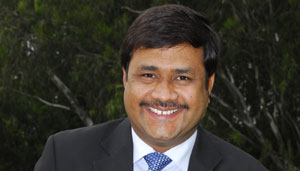Shrinivas Chebbi, Vice President - India & SAARC - Buildings Business, Schneider Electric
While on one hand the demand for energy intensifies, on the other, the rising decibel to bring down carbon emission poses a complex situation today. In this exclusive conversation, Shrinivas Chebbi, Vice President - India & SAARC - Buildings Business, Schneider Electric, shares his perspectives on a range of topics including the Indian energy saving scenario and the transition towards smart buildings with MANAS R BASTIA. Excerpts:
Please share key milestones in your journey since you moved to the Asia Pacific.
As part of Schneider Electric India, my first milestone would be when we set up a complete delivery platform and go-to market strategy for our energy-efficient solutions for several user segments. Second, as part of our strategic plan for the IT business, we participated in major acquisitions of Schneider Electric in India, including APW President Systems, a leader in rack and containment systems. The third milestone is putting in place a strong programme to develop products and specifically adapt them to Indian conditions.
Address the evolution of the Indian energy saving segment in recent years.
Earlier, energy efficiency or LEED-certified buildings or green buildings were good to have as a marketing tool. But today, energy saving has become critical and this is for two reasons. First is the growing cost of energy and the resulting rocketing operating costs of buildings owing to inefficient energy consumption and the second reason is the advent of stringent regulatory norms.
Comment on the energy savings market in India, especially the building segment.
India is a large and important market where energy saving is a greater challenge for pre-existing buildings than new ones. Practically every building that is, say, about six years old has the potential to deploy some energy-saving measures.
The energy consumption by buildings is very high and nearly 30 per cent of the total energy consumed in the country goes into buildings. In such a scenario, adoption of energy efficient measures is crucial. Every building has the potential to save anywhere between a minimum of 10 per cent to 30-35 per cent of what we are consuming today.
Please share your innovative solutions to save energy in buildings.
Buildings form a key segment for Schneider Electric India and we offer a wide range of innovative and technologically advanced solutions designed for various applications and all types of buildings. We can divide our building solutions into two categories: for greenfield projects, and for brownfield projects. Our solutions for green field projects include turnkey, integrated, segment-specific solutions involving all critical assets of the building such as power infrastructure, building management, security infrastructure, IT infrastructure etc. Solutions for brownfield or existing buildings include installed base services that help clients keep their installations productive and available. Our solutions under advanced services include a combination of audit/advisory services, retrofit and upgrade services, and extension services. These are specially targeted at older buildings or those where there is scope to enhance building quality without significant capex on the structure itself.
What are your plans for the near future?
In the next two years, the goal is to establish Schneider Electric firmly in the marketplace to deliver our exceptional solutions and services to all segments, geography and customers by joining our forces with our partner network.
What are the major opportunities and challenges in developing smart buildings and smart cities in India?
Smart buildings and smart cities promise great opportunities given India's rising demand for energy owing to urbanisation, digitisation and industrialisation. Also, we have a huge inventory of old buildings. Smart buildings consume lesser power and energy and are the answer to the need of urbanisation in the country. At the same time, it is a challenge to work together to deploy different technologies because there is no single company that can do everything required to build smart cities. For example, we bring on board proven capability in energy management and energy-efficient technologies for buildings and infrastructure. As part of this community, we will contribute to build smart buildings and cities with different technologies we have within Schneider Electric as well as by collaborating with different players.
To share your views on this interview, write in at feedback@ASAPPmedia.com




















